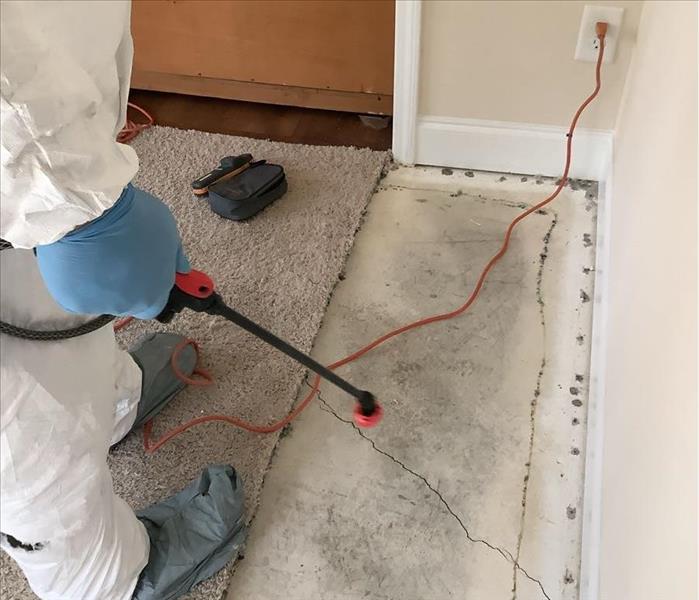Must-Have Tools for Cleaning Up a Flooded Basement
2/13/2024 (Permalink)
A flooded basement is a homeowner's nightmare, and immediate action is crucial to mitigate damage and restore your living space. Knowing the proper equipment to use when your basement floods can make a significant difference in the effectiveness of the cleanup process. In this blog, we'll explore the essential tools and equipment needed to navigate the deluge and reclaim your basement.
Safety First: Personal Protective Equipment (PPE)
Before diving into the cleanup, prioritize safety. Equip yourself with personal protective gear, including waterproof boots, gloves, and safety goggles. These items create a barrier between you and potential contaminants in the floodwater.
Submersible Pumps and Wet/Dry Vacuums
The most urgent task during basement flooding is removing standing water. Submersible pumps are highly effective for large volumes of water, while wet/dry vacuums come in handy for smaller or hard-to-reach areas. Ensure that the equipment is appropriate for handling water to prevent electrical hazards.
Dehumidifiers
After water removal, dehumidifiers play a crucial role in reducing excess moisture in the air. This helps prevent mold growth and accelerates the drying process. Position dehumidifiers strategically to cover the entire affected area.
High-Volume Fans
Proper air circulation is essential for drying out the space. High-volume fans promote efficient evaporation and help accelerate the drying process. Place fans strategically to ensure thorough air circulation throughout the basement.
Moisture Meters
To assess the moisture levels in walls, floors, and other surfaces, use moisture meters. These devices provide accurate readings, guiding you in determining when the basement is adequately dry and ready for restoration.
Anti-Microbial Cleaning Agents
Floodwater often carries a variety of contaminants. Use anti-microbial cleaning agents to disinfect and sanitize surfaces in the basement. This step is crucial for preventing mold growth and ensuring a safe living environment.
Protective Coverings
Once the water is removed and surfaces are sanitized, consider using protective coverings such as waterproof tarps or plastic sheeting. This helps prevent future water damage and acts as an additional barrier against potential leaks.
Sump Pump
If your basement is prone to flooding, consider installing a sump pump. This device helps manage water levels, directing excess water away from the foundation and reducing the risk of future flooding.
Buckets and Mops
For smaller cleanup tasks and to address residual moisture in corners and crevices, keep buckets and mops on hand. This manual approach allows for precise control in areas where machinery may be challenging to use.
Plastic Storage Bins
Replace cardboard boxes with plastic storage bins for items stored in the basement. Plastic bins provide an extra layer of protection against water and moisture, helping protect your belongings in case of future floods.
While not equipment in the traditional sense, professional restoration services are invaluable during basement flooding. Restoration experts have the experience, expertise, and specialized equipment to handle extensive water damage and ensure a thorough and efficient cleanup and restoration process.
A flooded basement may seem overwhelming, but with the right equipment, you can take charge of the cleanup process and reclaim your living space. From water removal tools to protective gear and preventative measures, having the proper equipment on hand empowers you to navigate the challenges of basement flooding with efficiency and effectiveness. Swift action and a well-equipped approach will help you restore your basement and prevent future water-related issues.

 24/7 Emergency Service
24/7 Emergency Service
